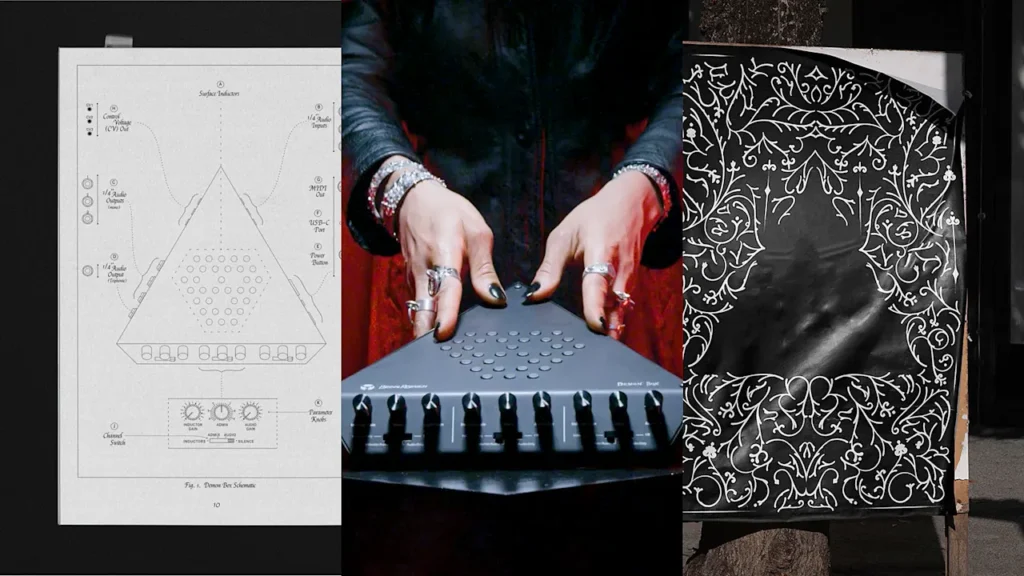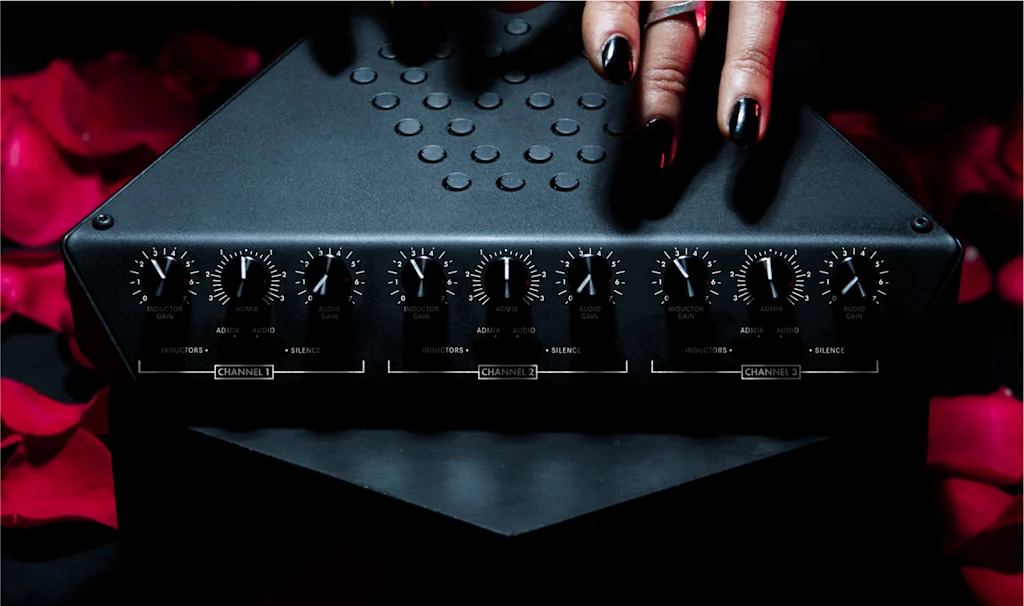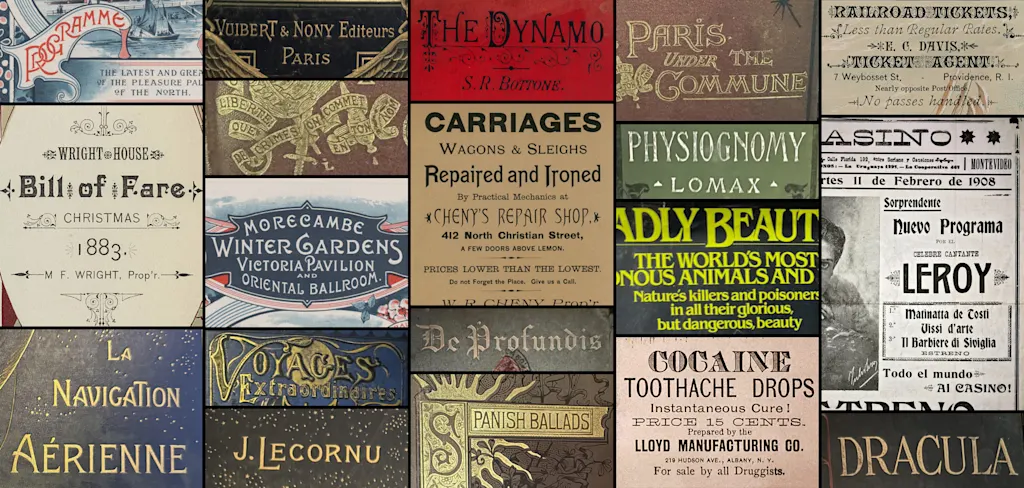
A new music startup created an instrument that can turn your microwave, electric toothbrush, and baby monitor into hauntingly beautiful music. Its branding converts all of those fascinating outputs into an infinite series of Victorian-inspired patterns.
Eternal Research is a brand founded by musician Alexandra Fierra, and it’s dedicated to “unlocking the existing music hidden in everyday things,” per its website. The company’s debut product is called the Demon Box. This fully analog device uses an intricate array of sensors to detect the electro-magnetic fields (EMFs) of almost any electronic device around it, and then turns those EMFs into music. The brand hit its funding goal on Kickstarter in a matter of hours, and the first Demon Boxes (which cost $999 a pop) are set to ship in November.
The Demon Box blends the study of music-making with modern technology—and for its launch it needed a brand to match. The New York-based agency Cotton Design was tasked with creating a visual identity that an infinitely audio-reactive generative model that transforms sound into historically accurate Victorian patterns. Like the instrument itself, the brand eschews convention to create something unique.

A music brand inspired by vampires, high fashion, and the Victorian era
When Talia Cotton, founder and creative director at Cotton Design, first met with Fierra, she felt as if Fierra was “on another frequency than the rest of the world.”
Fierra’s approach to music is all about craft, experimentation, and the intricacy of the sound that exists in the everyday world. Her vision for Eternal Research’s branding combined that attention to detail with a mysterious, almost vampiric visual sensibility.

“She kept on sending us these examples,” Cotton says. “She sent us an empty unboxing experience for YSL, because she said there was something special about that unboxing experience. There was a box, that held an envelope, that held a scarf—all these different layers of the brand that she thought were very thoughtful. She also sent us an old collector’s edition VHS tape of [Bram Stoker’s] Dracula in a coffin-shaped box.”
These small pieces of Fierra’s inner world slowly started to piece together for Cotton’s team, which included coder Noah Schwadron and project manager Sewon Bae. But there was one source of inspiration that became a kind of north star for the brand.
”[Fierra] is a collector of old books from the Victorian era,” Cotton says. “She has a very deep appreciation for the craft that is associated with that period in time, which is defined by ornamentation, and by the careful, slow process of making these outputs. Each Victorian pattern was unique.”
Eventually, Cotton realized that Fierra’s fascination with Victorian design sensibilities was the perfect basis for Eternal Research’s brand—the challenge was to figure out how to pull off an identity for a modern music brand company based on inspiration from the 19th century.
How Eternal Research pulled brand inspiration from A24
Cotton describes Eternal Research’s brand as geared toward two different consumer bases: one who is just discovering the brand, and another who is an avid follower prepared to pay the sizable $999 cost of the Demon Box. To appeal to both of those consumer segments, Cotton’s team needed to balance a strong element of personalization with a sense of approachability.
“This was really tricky for us, because on one hand there was the ornament, the detail, the special-feeling experience, and on the other hand, [Fierra] was very gung ho about making this feel open; like anybody could understand it,” Cotton says.
For consumers that are just discovering Eternal Research, Cotton’s team took inspiration from brands outside the music tech space with cult followings, like the movie studio A24—which Cotton says pulls some of its mystique from seeming almost “unbranded.” Similarly, Eternal Research’s most frequently used assets, including its logo and sans serif wordmark, are kept simple and unornamented to invite new customers to learn more.
But as fans of the brand dig deeper, the branding story pulls them into a more and more expressive world. That world is anchored by a generative model, coded from the ground up by Schwadron, that turns any sound input into a Victorian-inspired ornamental design. These patterns, which can be made in an infinite array of combinations, appear everywhere from the brand’s social media content to its website, letterheads, and packaging—and the model is available online for anyone to use.
A brand that turns sounds into Victorian patterns
Cotton Design’s audio-reactive design relies on historical sources to create period-accurate Victorian patterns. The team sifted through hundreds of vintage book covers, illustrations, and re-creations to understand how these patterns were constructed and which motifs recurred most commonly—down to the angles of individual curves and the kind of floral patterns that were most popular.
The base of the generative model can be understood as a kind of map. Each map is composed of a grid and a series of circles, which tell the model where the pattern’s lines should go. Every time the model is reloaded, it creates a random base map. From there, it takes in a sound input and interprets not only the input’s volume, but also its frequency, texture, and timbre.
These sound qualities are digested by the model and correlated to more than 30 different pattern parameters, like line density, length, animation speed, the number of floral accents, and more. With all of these layers stacked on top of each other, the outcome is a model that can literally make an infinite number of sound-based Victorian illustrations.
While audio-reactive designs have become more popular in recent years, this project is perhaps one of the most expressive, detailed applications of the technique to date. Paired with the music generated by the Demon Box, the brand is like an otherworldly symphony for both the ears and eyes.



